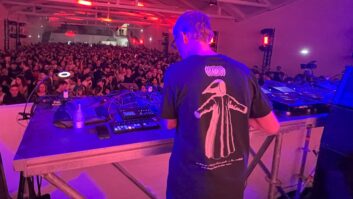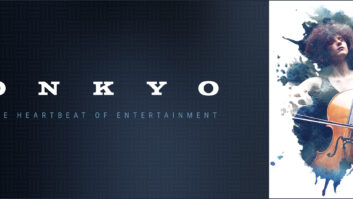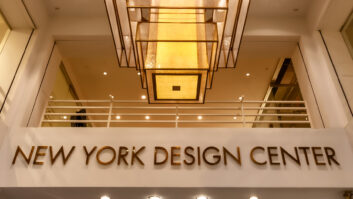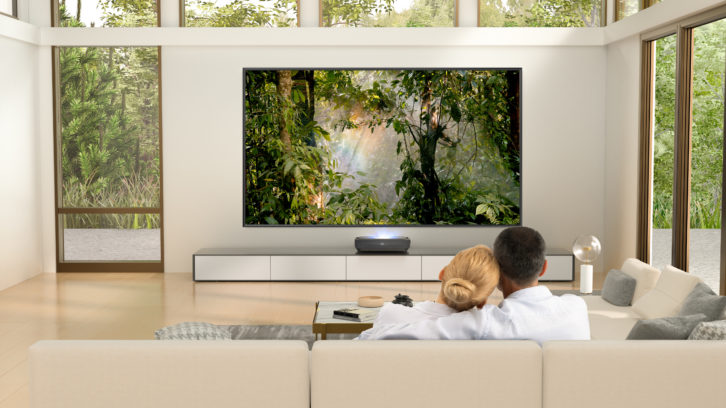
Sponsored content from New Age Electronics

As movie theater, concert, and sport tickets – and popcorn and beer – prices rise, and as more and more films find their way to VOD and streaming services quicker than ever, consumers more and more are opting to buy a bigger TV, not to mention microwaving their own popcorn and brewing their own sudss and create their own cinema or arena at home.
According to NPD, in February 2022, 44% of consumers bought a new TV because they wanted a larger screen, seven percent more than in 2020. According to Statistica, the average screen size in the U.S. has increased from 22 inches in 1997 to more than 50 inches now, and TrendForce says that 65-inch models are now the most popular size.
TWICE spoke to Fred Towns, president of New Age Electronics, about how consumer technology retailers can satisfy consumers hunger for a theater- or stadium-like experience without the drive and parking, the crowds, and the cost.
TWICE: What do you think is driving this desire for big screen or even wall-covering TVs?
Fred Towns: While this trend existed before 2020, the pandemic accelerated it – people spending more time at home upgraded their technology at home across the board. With the right screen and sound system, sporting events and concerts can have an immersive viewing experience that’s almost as good, if not better, than being at the event live. Gaming is the same way.
TWICE: How are retailers meeting these giant screen TV demands – or not meeting them? After all, displaying and demoing these larger screens likely presents a challenge for most retailers.
Fred Towns: As long as retailers have adequate space to display the large TVs, they often sell themselves on the demo floor. While displaying these larger screens does consume more wall or vertical space, laser TVs with short throw projectors conserve significant floor space. Brands like Hisense laser TVs project from below the screen, so the product sits on one vertical plane.
TWICE: There must be warehouse/inventory space issues that retailers must overcome as well.
Fred Towns: New Age Electronics offers just-in-time shipping, so retailers don’t need to bulk order and warehouse an excess of inventory. If retailers do decide to store inventory, however, Hisense laser TVs can be easily stored since they are broken down into panels for shipping. This allows the product to be shipped as a parcel instead of LTL [less-than-truckload] shipping, which saves retailers money.
TWICE: How do retailers explain laser projection to reticent consumers who have budget, space, and installation concerns?
Fred Towns: While the sophisticated short throw laser projection employs the latest and greatest technology, consumers shouldn’t be intimidated by it. Laser projection is sleek and easy to install – it does not require an engineer or electrician to get started. Units sit on furniture beneath the screen so users don’t need to run electrical wiring through the wall. There’s no heavy panel TV or projector to hang.
Retailers should stress the ease of installation as well as packaging efficiency, which make laser TVs the ideal solution for those who want to level up their home entertainment. At roughly 30 pounds, the screens are lightweight and don’t require any drilling into walls to mount. The price point is approachable, as well. Providers like Hisense offer a 100-inch screen ranging from $3,000-$3,500. A comparable LCD screen costs five times that.
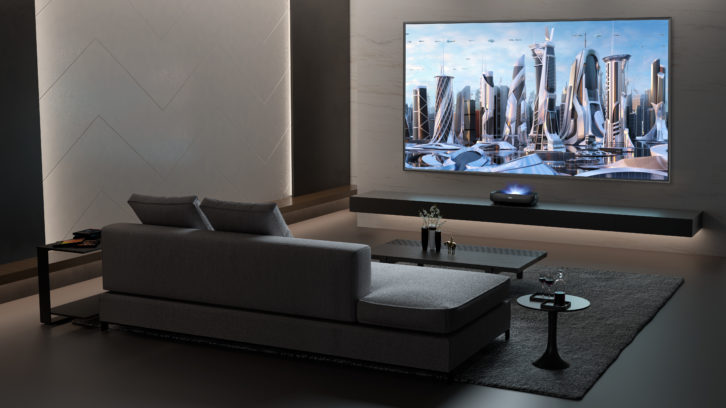
TWICE: But is the quality of a laser TV as good as a flat panel? Don’t projection TVs get washed out in brightly lit rooms – like the retail show floor?
Fred Towns: Picture quality is 20-25% better on a laser TV than on a panel TV with three times the viewing angle. The Hisense L9G Triple Laser can reproduce 107% BT2020 rating while some of the best rated LCD panels can only reproduce 84% BT 2020. Basically this means that color gamut reproduction is 22% better than LCD panels.
With ALR [ambient light rejecting], laser screens actually take outside light and project it down so viewers can still enjoy their content in a room with windows during the day. Retailers should try to display some of their laser TVs in areas with ambient light to demonstrate the ALR capability.
To learn more about partnering with New Age Electronics to sell laser TVs, contact NAEsales@tdsynnex.com or visit synnexcorp.com/newageelectronics/.
About New Age Electronics
New Age Electronics, a division of TD SYNNEX Corporation (NYSE: SNX), is a sales and supply chain solutions innovator that provides consumer technology (CT) manufacturers with a broad offering of logistics, distribution and remanufactured services. Extensive experience in the CT industry and a customer-centric approach has made New Age Electronics the provider of choice. New Age Electronics distinguishes itself with efficient operations and a relentless focus on customer satisfaction. Founded in 1988, New Age Electronics is headquartered in Long Beach, California.
For more information about New Age Electronics, call (310) 549-0000, toll-free (888) 234-0300, or visit the company’s website at https://www.synnexcorp.com/newageelectronics/.






